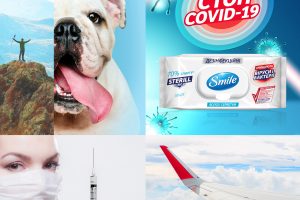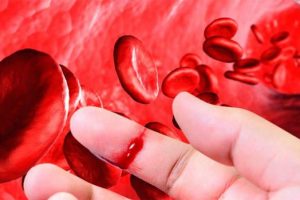Список литературы:
- Schaller M, Plewig G. Structure and function of eccrine, apocrine, and sebaceous glands. In: Bolognia JL, Jorizza JL, schaffer JV, editors. Dermatology. 3rd ed. Elsevier; 2012. 539 pp.544 pp.
- Leyden JJ. New understandings of the pathogenesis of acne. J Am Acad Dermatol. 1995;32:s15–25.
- Camera E, Ludovici M, Galante M, et al. Comprehensive analysis of the major lipid classes in sebum by rapid resolution high-performance liquid chromatography and electrospray mass spectrometry. J Lipid Res. 2010;51:3377–3388.
- Nikkari T. Comparative chemistryofsebum. J Invest Dermatol. 1974;62:257–267.
- Chen W, Zouboulis CC. Hormones and the pilosebaceous unit. Dermatoendocrinol. 2009;1:81–86.
- Rosenfield RL, Deplewski D, Kentsis A, Ciletti N. Mechanisms ofandrogen induction of sebocyte differentiation. Dermatology. 1998;196:43–46.
- Plewig G, Kligman A. Acneand Rosacea. 3rd ed. Springer; 2000. pp. 58–67.
- Wm BY, Choi JW, Park KC, Youn SW. Sebum, acne, skin elasticity, and gender difference- which is the major influencing factor for facial pores? SkinRes Technol. 2013;19:E45–53.
- Man MQ, Xin SJ, Song SP, et al. Variations of skin surface pH, sebum content,and stratumcorneum hydration with age and gender in a large Chinese population. Skin Pharmacol Physiol. 2009;22:190–199.
- Wan MJ, su XY, Zheng Y, et al. Seasonal variability in the biophysical properties of forehead skin in women in Guangzhou City, China. Int J Dermatol. 2015;54:1319–1324.
- Roh M, Han M,Kim D, Chung K. sebum output as a factor contributing to the size of facial pores. Br J Dermatol. 2006;155:890–894.
- Sugiyama-Nakagiri Y, Sugata K, Hachiya A, et al. Ethnic differences in the structural properties of facial skin. J Dermatol Sci. 2009;53:135–139.
- Fritsch M, Orfanos CD, Zouboulis CC. Sebocytes are the key regulators ofandrogen homeostasis in human skin. J Invest Dermatol. 2001;116:793–800.
- Zouboulis CC, Frimmel S, Ortmann J, et al. Sebaceous glands. In: Hoath SB, Maibach HI, editors. Neonatal Skin:Structure and Function. 2nd ed. Basel: Taylorand Francis; 2003. pp. 59–88.
- Fluhr JW, Mao-Qiang M, Brown BE, et al. Glycerol regulates stratum corneum hydration in sebaceous gland deficient (asebia) mice. J Invest Dermatol. 2003;120:728–737.
- Lee D-Y, Yamasaki K, Zouboulis CC, et al. Sebocytes express functional cathelicidin antimicrobial 28. peptides and can act to kill Propionibacterium acnes. J Invest Dermatol. 2008;128:1863–1866.
- Brand N, Petkovich M, Krust A, et al. Identification of a second human retinoic acid receptor. Nature. 1988;332:850–853.
- Fisher GJ, Talwar HS, Xiao JH, et al. Immunological identification and functional quantification of retinoicacid and retinoid X receptor proteins in human skin. J Biol Chem. 1994;269:20629–20635.
- Duell EA, Astrom A, Griffiths CE, et al. Human skin levels of retinoicacid and cytochrome P-450-derived 4-hydroxyretinoic acidafter topical applicationofretinoic acid in vivo compared to concentrations requiredto stimulateRAR-mediated transcription in vitro. J Clin Invest. 1992;4:1269–1274.
- Baron JM, Heise R, Blaner W, et al. Retinoic acid and its 4-oxo metabolites arefunctionally active in human skin cells in vitro. J Invest Dermatol. 2005;125:143–153.
- Mills OH, Marples RR, Kligman AM. Acne vulgaris Oral therapy with tetracycline and topical therapy with vitamin A. Arch Dermatol. 1972;106:200–203.
- Zouboulis CC. Sebaceous gland receptors. Dermatoendocrinol. 2009;1:77–80.
- Tsukada M, schroder M, Roos TC, et al. 13-cis retinoic acid exerts its specific activity on human sebocytes through selective intracellular isomerization to all-trans retinoic acid and brinding to retinoid acid receptors. J Invest Dermatol. 2000;115:321–327.
- Zouboulis CC, Korge B, Akamatsu J, et al. Effects of 13-cis-retinoic acid, all-transretinoic acid, and acitretin on the proliferation, lipid synthesis and keratin expression ofcultured human sebocytes in vitro. J Invest Dermatol. 1991;96:792–797.
- Thielen A-M, Saurat J-H. Retinoids. In: Bolognia JL, Jorizza JL, Schaffer JV, editors. Dermatology. 3rd ed. Elsevier; 2012. pp. 2089–2103.
- Gollnick H, Schramm M. Topical therapy in acne. J Eur Acad Dermatol Venereol. 1998;11:S8–29.
- Kang S, Krueger GG, Tanghetti EA, et al. Tazarotene cream in photodamage study group. A multicenter, randomized, double-blind trial of tazarotene 0.1% cream in the treatment of photodamage. J Am Acad Dermatol. 2005;52:268–274.
- Bouloc A, Vergnanini AL, Issa MC. A double-blind randomized study comparing the association of 39. retinol and LR2412 withTretinoin 0.0259% in photoaged skin. J Cosmet Dermatol. 2015;14:40–46.
- Dermira Presents Data from DRM01 Phase 2b Clinical Program at Annual Meeting for 40. Dermatologists. Oct 21, 2016. [Accessed October 22, 2016]. http://investor.dermira.com/phoenix.zhtml?c=253686&p=RssLanding&cat=news&id=2213702
- Dermira Announces PositiveTopline Phase 2b ClinicalTrial Results for DRM01 in Patients with Facial Acne Vulgaris. May 10, 2016. [Accessed October 22, 2016]. http://investor.dermira.com/phoenix.zhtml?c=253686&p=irol-newsArticle&ID=2166760
- Bissonnette R, Poulin Y, Drew J, et al. Olumacostat glasaretil, a novel topicalsebum inhibitor, in the treatment of acne vulgaris: A phase Ila, multicenter, randomized, vehicle controlled study. J Am Acad Dermatol. 2017;76:33–39.
- Green RS, Downing DT, Pochi PE, Strauss JS. Anatomical variation in theamountand composition ofhuman skin surfacelipid. J Invest Dermatol. 1970;54:240–247.
- Hunt DWC, Hofland HEJ. DRM01, a novel acetyl coenzyme A carboxylase inhibitor, reduces sebum production. J Invest Dermatol. 2014;134:s70.
- Draelos ZD, Matsubara A, Smiles K. The effect of 2% niacinamideon facial sebum production. J Cosmet Laser Ther. 2006;8:96–101.
- Mahmood T, Akhtar N, Khan BA, et al. Outcomes of 3% green tea emulsion on skin sebumproduction in male volunteers. Bosn J Basic Med Sci. 2010;10:260–264.
- Mahmood T, Akhtar N, Moldovan C. A comparison of the effects of topical green tea and lotus on facial sebum control in healthy subjects. Hippokratis. 2013;17:64–67.
- Peirano RI, Hamann T, Dusing HJ, et al. Topically applied L-carnitine effectively reduces sebum secretion in human skin. J Cosmet Dermatol. 2012;11:30–36.
- Gollnick H, Cunliffe W, Berson D, et al. Management of acne: a report from a Global Alliance to Improve Outcomes in Acne. J Am Acad Dermatol. 2003;49:s1–37.
- Hughes BR, Cunliffe WJ. A prospective study of the effect of isotretinoin on the follicular reservoid and sustainable sebum excretion rate in patients with acne. Arch Dermatol. 1994;130:315–318.
- stainforth JM, Layton AM, Taylor JP, Cunliffe WJ. Isotretinoin forthe treatment of acne vulgaris: which factors may predict the need for more than one course? Br J Dermatol. 1993;129:297–301.
- Cunliffe WJ, Layton A, Knaggs HE. Retinoids. In: Saurat JH, editor. Retinoids: 10 Years On. Karger; 1991. pp. 272–280.
- Leyden JJ. The role of isotretinoin in the treatment of acne: personal observations. J Am Acad Dermatol. 1998;39:s45–49.
- Muhlemann MF, Carter GO, Cream JJ, Wise P. Oral spironolactone: an effective treatment for acne vulgaris in women. Br J Dermatol. 1986;115:227–232.
- Burke BM, Cunliffe W. Oral spironolactone therapy for female patients with acne, hirsutism, or androgenic alopecia. Br K Dermatol. 1985;112:124–125.
- Goodfellow A, Alaghband-Zadeh J, Carter G, et al. Oral spironolactone improves acne vulgarisand 55. reduces sebum excretion. Br J Dermatol. 1984;111:209–214.
- Fritsch M, Orfanos CE, Zouboulis CC. Sebocytes are the key regulators ofandrogen homeostasis in human skin. J Invest Dermatol. 2001;116:793–800.
- Akamatsu H, Zouboulis CC, Orfanos CE. spironolactone directly inhibits proliferation of cultured human facial sebocytes and acts antagonistically to testosterone and 5alpha-dihydrotestosterone in vitro. J Invest Dermatol. 1993;100:660–662.
- Shaw JC, White LE. Long-term safety of spironolactone inacne: results of an 8-year followup study. J Cutan Med Surg. 2002;6:541–545.
- Plovanich M, Weng QY, Mostaghimi A. Low usefulness of potassium monitoring among healthy 59. young women taking spironolactone for acne. JAMA Dermatol. 2015;151:941–944.
- Mackenzie IS, Morants C, Wei L, et al. Spironolactone useand risk of incident cancers: a retrospecto, matched cohort study. Br J Clin Pharmacol. 2017;83:653–663.
- Biggar RJ, Andersen EW, Wolhfahrt J, Melbye M. Spironolactone useand the risk of breast and gynaecologic cancers. Cancer Epidemiol. 2013;37:870–875.
- Mackenzie IS, Macdonald TM, Thompson A, et al. Spironolactone and risk ofincident breast cancer in women older than 55 years: retrospective, matched cohort study. BMJ. 2012;345:e4447
- Heemers HV, Tindall DJ. Androgen receptor(AR) coregulators: a diversity offunctions converging on and regulating theAR transcriptional complex. Endocr Rev. 2007;28:778–808.
- Speroff L, DeCherney A. Eval uation of a new generation of oral contraceptives. Obstet Gynecol. 1993;81:1034–1047.
- van Vloten WA, van Haselen CW, van Zuuren EJ, et al. The effect of 2 combined oral contraceptives containingeither drospirenone or cyproterone acetate on acne and seborrhea. Cutis. 2002;69:2–15.
- Raudrant D, Rabe T. Progestogens with antiandrogenic properties. Drugs. 2003;63:463–492.
- Katz HI, Kempers S, Akin MD, et al. Effect of a desogestrel-containing oral contraceptive on the skin. Eur J Contracept Reprod Health Care. 2000;5:248–255.
- Prilepskaya VN, Serov VN, Zharov EV, et al. Effects of a phasic oral contraceptive containing desogestrel on facial seborrhea and acne. Contraception. 2003;68:239–245.
- Koulianos GT. Treatment of acne with oral contraceptives: criteria for pill selection. Cutis. 2000;66:281–286.
- Shah AR. Use ofintradermal botulinum toxin to reduce sebum production and facial pore size. J Drugs Dermatol. 2008;7(9):847–850.
- Li ZJ, Park SB, Sohn KC, et al. Regulation of lipid production by acetylcholine signaling in human sebaceous glands. J Dermatol Sci. 2013;72:116–122.
- Rose AE, Goldberg DJ. Safety andefficacty of intradermal injection of botulinum toxin for the treatment ofoily skin. Dermatol Surg. 2013;39:443–448.
- Kurzen H, Berger H, Jager C, et al. Phenotypical and molecular profiling of the extraneuronal cholinergic system of the skin. J Invest Dermatol. 2004;123:937–949.
- Kurzen H, Schallreuter KU. Novel aspects in cutaneousbiology of acetylcholine synthesis and acetylcholine receptors. Exp Dermatol. 2004;13:27–30.
- Ibbotson SH. Topical 5-aminolaevulinic acid photodynamic therapy for the treatment of skin conditions other than nonmelanoma skin cancer. Br J Dermatol. 2002;146:178–188.
- Kosaka S, Kawana S, Zouboulis CC, et al. Targeting of sebocytesby aminolevulinic acid-dependent photosensitization. Photochem Photobol. 2006;82:453–457.
- Pollock B, Turner D, Stringer MR, et al. Topical aminolaevulinic acid photodynamic therapy for the treatment of acne vulgaris: a study of clinical efficacyand mechanism. Br J Dermatol. 2004;51:616–622.
- Horfelt C, Stenquist B, Larko O, et al. Photodynamic therapy for acne vulgaris: apilot study of the dose-response and mechanism ofaction. Acta Derm Venereol. 2007;87:325–329.
- Hongcharu W, Taylor CR, Chang Y, et al. Topical ALA-photodynamic therapy for the treatment of acne vulgaris. J Invest Dermatol. 2000;115:183–192.
- Perez-Maldonado A, Runger TM, Krejci-Papa N. The 1,450-nm diode laser reduces sebum production in facial skin: a possible mode ofaction ofits effectiveness for the treatmentofacne vulgaris. Lasers Surg Med. 2007;39:189–192.
- Yeung CK, Shek SY, Yu CS, et al. Treatment of inflammatory facial acne with 1,450-nm diode laser in type IV toV Asian skin using an optimal combination of laser parameters. Dermatol Surg. 2009;35:593–600.
- Laubach HJ, Astner S, Watanabe K, et al. Effects of a 1,450 nm diode laser on facial sebum excretion. Lasers Surg Med. 2009;41:110–115.













Комментировать